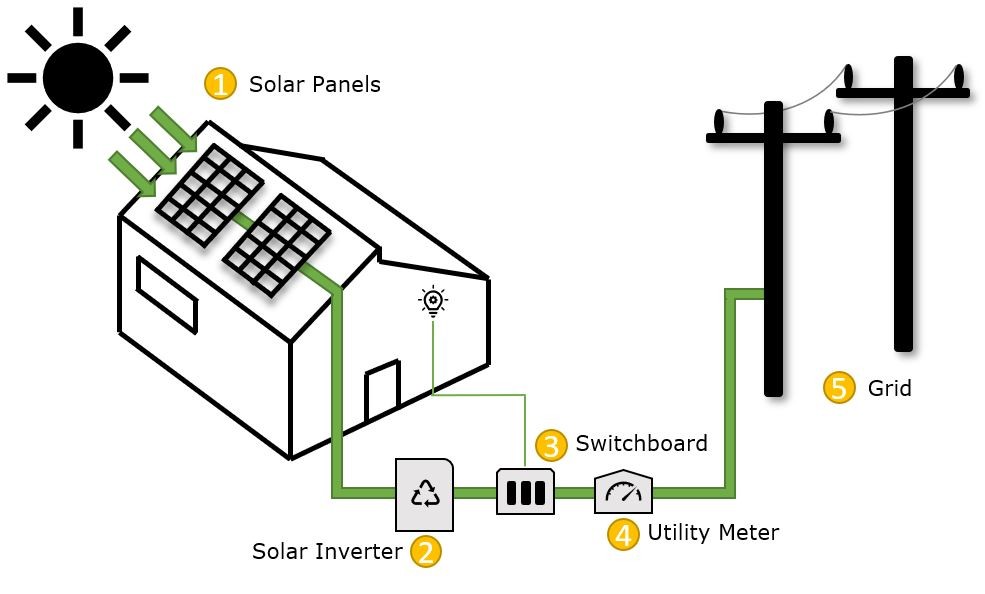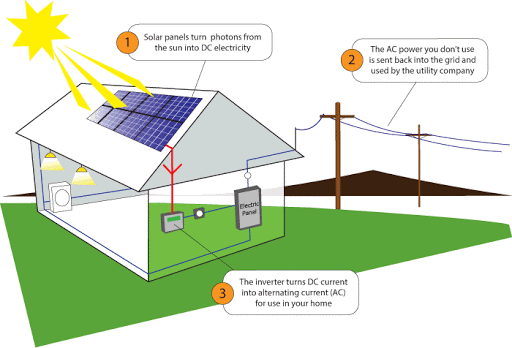How Does Solar Energy Work - Explained in 5 Steps

If you weren’t meditating in the Himalayas during the last ten years, then you would have surely come across something related to solar energy. Gone are the days when solar-powered calculators were the only cool solar thing in the market. The past decade has seen the growth of solar power from powering nerdy tools into changing the way humanity approaches energy. Today, the uses of Solar energy know no bounds. From powering offices of tech giants like Google to lighting up the remotest parts of the world, solar energy systems are ushering in the zero-carbon clean energy revolution.
For all its wonderful impacts and utility, how solar energy works can be mysterious for those who aren’t familiar with it. Let us try to understand how humans are using solar energy for home and workplaces.
Source of Solar Power:
At the center of our Solar System, sits a massive nuclear reactor, namely the Sun. A tiny portion of the enormous energy released by reactions taking place inside its core reaches our planet after a lonely journey of a few minutes through space. However, this tiny portion of renewable solar energy is so huge that just a few hours of incident solar energy is more than humanity’s yearly energy consumption.
Although it took millions of years for humans to invent solar cells to harness incident sunlight, plants have been doing that since the origin of life. Plants are sophisticated green industries that produce energy via photosynthesis which in turn is powered by sunlight. The future might bring to us Photosynthetic Solar Cells but for now, we use Solar Cells made of Silicon.
Solar Energy Explained Step by Step:

(In picture: Step by step process of solar energy generation)
The first step is the incidence of sunlight on Solar Panels. Solar panels are usually rectangular metal frames inside which small solar cells are arranged and wired together. Solar panels are placed on rooftops of homes and office buildings or in open areas on the ground where direct sunlight is available throughout the day. It should be ensured that no shadow falls on the panels as it can lead to a number of problems. Check out our guide on solar troubleshooting and solutions to protect your solar panels.
In the second step, the sunlight gets converted into electrical energy. Don’t panic, we won’t go into the complex physics of the process. Electric current is produced whenever there is a movement of electrons. In the case of a solar cell, this movement takes place thanks to the photons from sunlight. A photon strikes the silicon wafers inside the solar cell and knocks an electron. The electron then moves under the influence of the electric field created by oppositely charged silicon wafers. The electrons then move through a wire generating electric current.
In the third step, the conversion of DC to AC takes place. Most of our homes and offices run on alternating current (AC), but the electricity generated by solar panels is direct (DC). Thus it has to be passed through an inverter that converts into AC. Inverters can either be attached to each solar panel, called microinverters, or there can be a central inverter that converts direct current from all the panels before sending it into the mainline. Solar monitoring systems can also be attached to the inverters to track energy production, usage, and efficiency among other things.
In the fourth step, the alternating current is supplied via a meter to our cozy homes and productive workplaces to run the desired equipment. The meter records solar electricity usage. Metering can be of two types - gross metering and net metering depending on the place you live. In most places, solar energy users can export the excess electricity generated to the main grid and get credits or revenue in return.
The fifth step could have been bill payment but solar power saves you that trouble. This is just one of the benefits of solar energy, the absence of power cuts, greener climate, solar subsidy, and solar tax incentives being some of the others. Also, if you want to extract the maximum benefits from your solar installation for the longest period, then do check out our ultimate guide to solar panel cleaning and maintenance.
 Unergia
Unergia